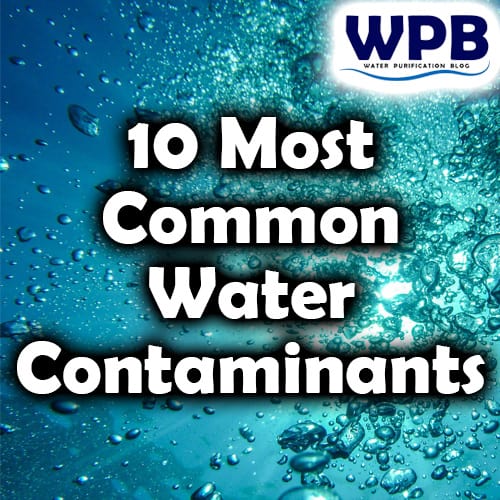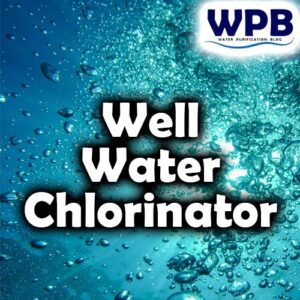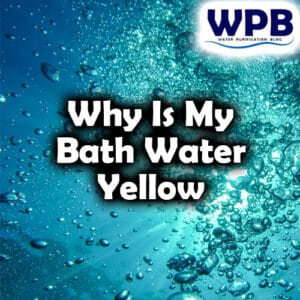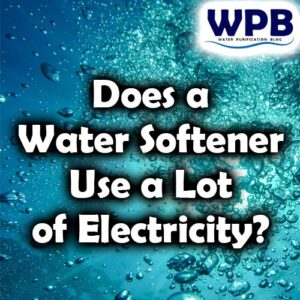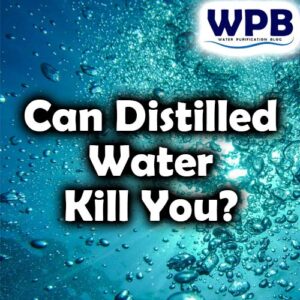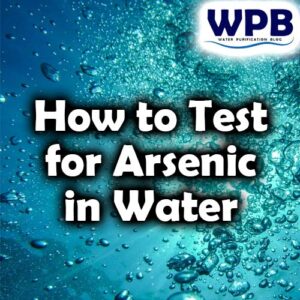10 Most Common Water Contaminants and Their Removal Methods
Table of Contents
1. Arsenic: One of the Most Dangerous Water Contaminants
Arsenic contamination poses a significant threat to public health, originating from both natural and anthropogenic sources.
Sources of Arsenic Contamination
Natural Deposits
Arsenic exists naturally in the Earth’s crust and can be found in rocks, soil, and groundwater. Certain geological formations contain high levels of inorganic arsenic, leading to elevated concentrations in groundwater.
Countries like Argentina, Bangladesh, Cambodia, Chile, China, India, Mexico, Pakistan, the United States of America, and Vietnam experience significant arsenic contamination in their groundwater due to geological factors. Natural sources of arsenic contribute to the overall contamination, but they are not the sole culprits.
Industrial and Agricultural Pollution
Aside from natural sources, arsenic contamination can also stem from human activities. Industrial processes and agricultural practices can introduce arsenic into the environment, further exacerbating the contamination issue.
Industries such as mining, smelting, and coal combustion release arsenic into the air and water, contaminating nearby soil and water bodies.
Similarly, the use of arsenic-based pesticides and fertilizers in agriculture can result in soil and groundwater contamination. These anthropogenic sources significantly contribute to the overall arsenic pollution problem.
Removal Methods for Arsenic Contamination
To ensure safe drinking water, it is crucial to employ effective removal methods to mitigate arsenic contamination. Several techniques have proven successful in reducing arsenic levels, including:
Reverse Osmosis (RO)
Reverse osmosis is a widely used and effective method for removing arsenic from water. This process utilizes a semipermeable membrane that allows water molecules to pass through while trapping dissolved contaminants, including arsenic.
Reverse osmosis systems in industrial or domestic use can effectively reduce arsenic concentrations, ensuring safe drinking water.
Ultra-Filtration
Ultra-filtration is another membrane-based filtration method that can effectively remove arsenic. It operates on a smaller scale compared to reverse osmosis and works by passing water through a porous membrane with fine pores.
This process can efficiently eliminate particulates, colloids, and even some dissolved substances, including arsenic. Ultra-filtration can serve as an effective pre-treatment method in arsenic removal systems.
Distillation
Distillation is a well-established process that involves heating water to create steam, which is then condensed back into liquid form, leaving behind contaminants such as arsenic.
Distillation effectively removes most impurities, including arsenic, by separating them from the water through the vaporization-condensation process.
However, distillation can be energy-intensive and may not be suitable for large-scale water treatment.
Ion Exchange
Ion exchange is a method that involves passing water through a resin bed, where ions of unwanted substances, such as arsenic, are exchanged for more desirable ions.
The resin bed consists of tiny beads with charged sites that attract and bind specific ions, effectively removing them from the water. Ion exchange systems can efficiently reduce arsenic concentrations, but periodic regeneration or replacement of the resin is necessary to maintain their effectiveness.
In conclusion, arsenic contamination in both natural and anthropogenic forms poses a significant risk to public health. Natural deposits of arsenic in the Earth’s crust and geological formations contribute to groundwater contamination in various regions.
However, industrial and agricultural activities also introduce arsenic into the environment, further exacerbating the issue. To combat arsenic contamination and ensure safe drinking water, removal methods such as reverse osmosis, ultra-filtration, distillation, and ion exchange have proven effective.
Understanding the sources of arsenic contamination and the available removal methods is crucial for implementing appropriate mitigation strategies.
2. Chlorine
Chlorine contamination in water is a significant concern as it can affect both the quality and safety of drinking water.
Sources of Chlorine Contamination
Chlorine contamination can occur due to several sources, including:
Water Disinfection by Water Companies
Water companies use disinfectants like chlorine or chloramine to kill disease-causing germs, such as Salmonella, Campylobacter, and norovirus, and ensure safe drinking water. While this process effectively eliminates harmful microorganisms, it can result in chlorine contamination.
Industrial and Agricultural Activities
Industries and agricultural practices may release chlorine compounds into water sources. These can include the discharge of wastewater from factories or the use of chlorine-based pesticides and herbicides. These activities contribute to chlorine contamination in water bodies.
Residential Use of Chlorinated Products
The use of chlorine-based products in households can also introduce chlorine into water sources. For instance, swimming pools treated with chlorine can release residual chlorine into the environment.
Additionally, the improper disposal of bleach or cleaning products containing chlorine can lead to contamination.
Removal Methods for Chlorine
To ensure safe and clean drinking water, it is essential to employ effective removal methods for chlorine. Here are some commonly used techniques:
Reverse Osmosis Filtration
Reverse osmosis is a popular method for removing dissolved minerals and salts from water.
Although reverse osmosis is not intended for chlorine removal, it needs all the chlorine to be removed before RO membranes.
As a complete system, with it’s pretreatment, a reverse osmosis unit will remove chlorine and provide chlorine free water.
Activated Carbon Filtration
Activated carbon filters are highly effective in removing chlorine and its byproducts from water. These filters work by adsorption, where chlorine molecules adhere to the surface of the activated carbon. This method can significantly improve the taste and odor of water.
Boiling and Evaporation
For individual use, boiling water is a simple method to remove chlorine. Boiling the water for around 15 minutes allows the chlorine to evaporate, making the water safe to drink. However, this method is best suited for smaller quantities of water.
Chemical Neutralization
Chemical neutralization involves using a dechlorinating agent, such as sodium bisulfite or vitamin C, to neutralize chlorine in water.
These agents chemically react with chlorine, converting it into a harmless compound.
3. Lead
Lead contamination in drinking water is a significant concern as it poses health risks, especially for children and pregnant women. Understanding the sources of lead contamination and the available removal methods is crucial for ensuring safe and clean drinking water.
Sources of Lead Contamination
Lead can enter the water supply through various sources, including lead pipes, faucets, plumbing fixtures, and older plumbing materials. Let’s take a closer look at each of these sources:
Lead Pipes
Lead pipes used to transport drinking water from the source to homes are a common source of lead contamination. Over time, the lead in these pipes can dissolve into the water, especially if the water has high acidity or low mineral content. Pipes made of lead or those with lead solder connections may pose a significant risk of lead contamination.
Faucets and Plumbing Fixtures
Faucets and plumbing fixtures made of brass or chrome-plated brass can contain lead. Brass fixtures manufactured before 2014 may contain higher levels of lead, which can contaminate the water that passes through them. Corroded faucets or fixtures may also contribute to lead leaching into the water supply.
Older Plumbing Materials
Household plumbing systems built before 1986 may contain lead in their solder, welding materials, or pipe fittings. These materials were commonly used in the past but have since been replaced with safer alternatives. If your home has older plumbing, there is a higher likelihood of lead contamination in the water.
Removal Methods for Lead Contamination
Once you have identified the presence of lead in your water, it is essential to take steps to remove or reduce its levels. Here are several effective methods for lead removal:
Whole House Filtration Systems
Installing a whole house filtration system can effectively remove lead and other contaminants from the entire water supply in your home. These systems typically use advanced filtration technologies, such as activated carbon filters and reverse osmosis, to provide comprehensive water treatment.
Reverse Osmosis (RO) System
An RO system is specifically designed to remove a wide range of impurities, including lead, from drinking water. It works by forcing water through a semipermeable membrane that filters out contaminants.
RO systems are highly efficient in removing lead and provide a convenient point-of-use solution for clean drinking water.
4. Mercury
Mercury contamination in water is a significant concern due to its potential toxicity to humans and ecosystems. There are several sources of mercury contamination, and various methods are employed to remove it from water.
One primary source of mercury contamination is atmospheric deposition, which refers to the deposition of mercury from the atmosphere into aquatic ecosystems.
According to the U.S. Environmental Protection Agency (USEPA), emissions from coal-fired power plants are the largest source of mercury to the atmosphere, and mercury is primarily deposited in its inorganic form through this process.
Additionally, industrial activities, such as coal combustion, have contributed to increased mercury concentrations in different environmental media, including soil, water, and air.
Apart from coal combustion, various anthropogenic sources are responsible for mercury contamination in water. These sources include iron and steel industries, cement industries, gold industries, non-ferrous metal smelting, and chloro-alkali industry, among others.
These industries release mercury as a byproduct of their processes, leading to potential contamination of nearby water bodies.
To address mercury contamination in water, several removal methods are employed. These methods can be categorized into two main approaches: physical and chemical methods.
Physical methods involve the physical removal of mercury from water. Some common physical removal techniques include sedimentation, filtration, and adsorption.
Sedimentation allows mercury particles to settle at the bottom of a water body, where they can be removed. Filtration utilizes various types of filters to trap and remove mercury particles. Adsorption involves using materials such as activated carbon, zeolites, or other adsorbents to capture mercury from water.
Chemical methods aim to chemically transform or precipitate mercury to facilitate its removal. One commonly used method is chemical precipitation, where chemicals are added to water to form insoluble mercury compounds that can be easily separated. Another approach is chemical oxidation, which converts mercury into a more soluble form that can be subsequently removed through other processes.
Additionally, advanced technologies such as ion exchange, membrane filtration, and electrochemical methods are being researched and developed to enhance the removal efficiency of mercury from water.
5. Nitrate
Nitrate contamination of water is a significant concern worldwide due to its detrimental effects on both ecological and human health. Understanding the sources of nitrate contamination and effective removal methods is crucial for preserving water quality.
Sources of Nitrate Contamination
Agricultural Activities
Agricultural practices, including the excessive application of inorganic nitrogenous fertilizers and manures, contribute significantly to nitrate pollution of water supplies. Runoff from fields, where these fertilizers are applied, can carry nitrates into groundwater and surface water sources, leading to contamination.
Wastewater Treatment
Improperly treated wastewater can also be a source of nitrate contamination. Nitrogenous waste products from human and animal excreta, including septic tanks, contain nitrates. If not adequately treated, these nitrates can find their way into water bodies, compromising water quality.
Oxidation of Nitrogenous Waste Products
The oxidation of nitrogenous waste products, such as ammonia, in human and animal excreta is another significant source of nitrate contamination. When these waste products come into contact with water, they can undergo biological and chemical processes that convert them into nitrates.
6. Bacteria and Viruses
Water contamination is a significant concern as it can lead to the presence of bacteria and viruses in drinking water. These harmful microorganisms can cause various diseases and pose a risk to public health.
Sources of Bacteria and Viruses Contamination
- Surface Water Contamination: Pathogens, including bacteria, protozoa, and viruses, can contaminate water sources such as rivers, lakes, and ponds. These pathogens can enter the water through sewage discharge, agricultural runoff, or animal waste. Surface water contamination is a common source of bacteria and viruses in drinking water.
- Groundwater Contamination: Groundwater can also become contaminated with bacteria and viruses. Pathogens can infiltrate groundwater through the movement of surface water, particularly during periods of heavy rainfall or flooding. The transport of pathogens from surface water to groundwater increases the vulnerability of groundwater to contamination.
- Sewage and Wastewater: Improperly treated or untreated sewage and wastewater can introduce bacteria and viruses into water sources. Sewage leaks, malfunctioning septic systems, or inadequate wastewater treatment can contaminate nearby water bodies, leading to the presence of harmful microorganisms.
- Agricultural Runoff: Agricultural activities can contribute to water contamination through the use of fertilizers, pesticides, and manure. These substances can wash into nearby water sources, carrying bacteria and viruses with them. Contaminated runoff from agricultural areas is a significant source of waterborne pathogens.
- Industrial Discharges: Industrial processes can release pollutants, including bacteria and viruses, into water bodies. Improper disposal of industrial waste or accidental spills can lead to the contamination of nearby water sources. Industries such as mining, manufacturing, and chemical production pose a risk of introducing harmful microorganisms into water.
- Animal and Wildlife: Animal feces, including that of livestock, wildlife, and pets, can contain bacteria and viruses that can contaminate water sources. Runoff from agricultural areas or direct deposition can introduce pathogens into rivers, streams, and groundwater.
Removal Methods
Boiling
Boiling water is a simple and reliable method to kill disease-causing germs, including bacteria, viruses, and parasites [1]. By bringing the water to a rolling boil for at least one minute (or three minutes at higher altitudes), you can effectively eliminate most microorganisms. Boiling water is especially recommended during emergency situations or when safe bottled water is not available.
Coagulation and Flocculation
In water treatment plants, coagulation is often the initial step in the removal of contaminants [2]. Chemicals with a positive charge are added to the water, neutralizing the negative charge of dirt and other dissolved particles. This process allows the particles to bind together, forming larger and heavier particles.
Disinfection
By dosing oxidizing chemicals like chlorine, chlorine dioxide water can be disinfected and safe for use.
Ultraviolet sterilization
UV sterilization is another way of providing microbiologically safe water.
7. Pesticides
Pesticides are widely used to control pests and increase agricultural productivity. However, their extensive use has led to the contamination of water sources, posing significant risks to human health and the environment.
Sources of Pesticide Contamination
Agricultural Runoff
A significant source of pesticide contamination in water is agricultural runoff. When farmers apply pesticides to their crops, rainwater or irrigation can carry these chemicals into nearby streams, rivers, and groundwater sources. The pesticides can also seep into the soil and eventually reach underground water reservoirs.
Industrial Discharges
Industries that manufacture or utilize pesticides may release contaminated wastewater into water bodies. Improper disposal practices and inadequate wastewater treatment can contribute to the presence of pesticides in rivers, lakes, and other aquatic environments.
Residential and Urban Areas
Pesticides used in residential areas, such as lawns, gardens, and public spaces, can find their way into water sources through surface runoff or infiltration. Improper application or overuse of pesticides by homeowners and landscaping companies can increase the risk of contamination.
Point Source Pollution
Point sources of pollution, such as chemical manufacturing plants or pesticide storage facilities, can release pesticides directly into nearby water bodies. Accidental spills, leaks, or inadequate containment measures can result in significant pesticide contamination.
Groundwater Contamination
Pesticides can infiltrate the soil and eventually reach groundwater sources. Once present in the groundwater, these chemicals can persist for long periods, posing a continuous threat to drinking water supplies.
Removal Methods for Pesticides
Activated Carbon Filtration
Activated carbon filtration is an effective method for removing pesticides from water. It involves passing water through a filter bed containing activated carbon, which adsorbs the pesticide molecules. This process helps to reduce pesticide concentrations and improve water quality.
Reverse Osmosis
Reverse osmosis is a commonly used technique for removing pesticides from water. It works by applying pressure to force water through a semipermeable membrane, which traps the pesticide molecules while allowing clean water to pass through.
Advanced Oxidation Processes
Advanced oxidation processes, such as UV irradiation and ozonation, can degrade pesticides in water through chemical reactions. These processes generate highly reactive species that break down the pesticide molecules into harmless byproducts.
8. Pharmaceuticals
Water contamination by pharmaceuticals is a growing concern due to its potential impacts on human health and the environment. Understanding the sources of pharmaceutical contamination and implementing effective removal methods is crucial to ensure the safety of our water resources.
Sources of Pharmaceuticals Contamination
Wastewater Treatment Plants (WWTPs) as Major Sources
Wastewater treatment plants (WWTPs) play a significant role in the release of pharmaceutical-related emerging contaminants (ECs) into water bodies. These ECs can enter WWTPs through various pathways, such as domestic sewage, hospital wastewater, and industrial effluents. Despite their advanced treatment processes, WWTPs are not designed to remove pharmaceuticals completely, leading to their discharge into receiving waters.
Disposal of Unused Medications
Improper disposal of unused medications contributes to pharmaceutical contamination of water. When people dispose of expired or unwanted medications by flushing them down the toilet or pouring them down the sink, these pharmaceuticals can enter the water supply. This practice introduces a wide range of pharmaceutical contaminants, including antibiotics, hormones, and painkillers, into the aquatic environment.
Agricultural Runoff and Animal Waste
Agricultural activities can also contribute to pharmaceutical contamination of water. The use of veterinary drugs, such as antibiotics and hormones, in livestock farming can lead to their presence in animal waste. When this waste is not properly managed, it can contaminate nearby water bodies through runoff or leaching. Additionally, the application of pharmaceutical-containing fertilizers and irrigation with contaminated water can further contribute to water contamination.
Hospital and Healthcare Facilities
Hospital and healthcare facilities generate a significant amount of pharmaceutical waste. Improper disposal of expired or unused medications, as well as the release of pharmaceuticals during patient care, can contribute to water contamination. Effluents from hospitals and healthcare facilities may contain a wide range of pharmaceutical compounds, including antibiotics, chemotherapy drugs, and contrast agents.
9. Heavy metals
Water contamination due to heavy metals poses a significant threat to both the environment and human health. Understanding the sources of heavy metal contamination and the methods to remove them is crucial for effective water management.
Sources of Heavy Metals Contamination in Water
Industrial Activities
Industrial activities are a significant source of heavy metal contamination in water. Various industries, such as mining, metal processing, and manufacturing, generate wastewater containing high concentrations of heavy metals. These metals, including lead, mercury, cadmium, and chromium, enter water bodies through improper disposal or accidental spills. The discharge of untreated industrial effluents is a major contributor to heavy metal pollution in rivers, lakes, and oceans.
Agricultural Practices
Agricultural practices also contribute to heavy metal contamination in water. The use of fertilizers, pesticides, and herbicides containing heavy metals can result in their runoff into nearby water sources. Additionally, livestock farming and the application of animal manure can lead to the release of heavy metals into the soil, which can then find their way into water bodies through leaching and surface runoff.
Urban Runoff
Urban runoff, which includes rainwater and snowmelt that flows over impervious surfaces like roads, rooftops, and parking lots, can carry heavy metals into water bodies. These metals originate from various sources such as vehicle emissions, industrial areas, construction sites, and household activities. Urban runoff is a significant contributor to heavy metal pollution, especially in densely populated areas.
Mining Activities
Mining activities, both small-scale and large-scale, can introduce substantial amounts of heavy metals into water sources. During mining operations, minerals containing heavy metals are extracted, processed, and often left exposed to the elements. This exposure can lead to the leaching of heavy metals into nearby water bodies, contaminating them and posing a risk to aquatic ecosystems and human populations.
Natural Weathering and Erosion
Natural weathering and erosion processes also contribute to heavy metal contamination in water. Rocks and soils contain trace amounts of heavy metals, and over time, these metals can be released into water sources through natural processes. The erosion of rocks and soil, coupled with the transportation of sediments by rivers and streams, can result in the dispersion of heavy metals into aquatic environments.
10. Fluoride
Fluoride contamination of water is a significant issue that poses health risks to humans. It is essential to understand the sources of fluoride contamination and the available methods for its removal. In this article, we will explore the anthropogenic factors contributing to fluoride pollution in water, including the use of fluoride-containing substances and industrial emissions.
Sources of Fluoride Contamination
Fluoride contamination in water can arise from different anthropogenic activities. Let’s explore some of the primary sources:
Use of Fluoride-Containing Substances
The use of fluoride-containing substances such as phosphate fertilizers, rodenticides, fumigants, herbicides, and insecticides can potentially raise the fluoride level in groundwater. These products, when applied to agricultural lands or used in pest control, can lead to the infiltration of fluoride into the soil and subsequently contaminate water sources.
Industrial Emissions
Industrial activities contribute significantly to fluoride pollution in water. Coal combustion, for example, releases fluoride during the burning process, which can contaminate nearby water sources. Additionally, emissions from industries involved in steel, aluminium, glass, and tile production also contain fluoride particles that can contaminate water when released into the environment.
Fly Ash and Industrial Wastes
Fly ash, a waste product generated by thermal power plants, has been studied for its ability to remove fluoride from water and wastewater. It has been found that fly ash exhibits favorable fluoride removal properties, particularly at low concentrations and high temperatures. Various other industrial wastes have also been examined for their potential in fluoride removal, providing promising results.
Removal Methods for Fluoride Contamination
Removing fluoride from water is crucial to ensure safe drinking water for communities. Here are some effective methods employed for fluoride removal:
Various techniques have been developed to reduce fluoride levels in water. These techniques utilize different principles such as adsorption, precipitation, and ion exchange to remove fluoride ions from water. One of the most important aspects of these techniques is the use of a membrane, which plays a key role in tackling water contamination and addressing global challenges associated with fluoride-related diseases.

Who am I?
I am working as a water treatment technical manager and I have more than 25 years of practical experience in water purification.
Water purification expert
After many years of experience in water purification, I want to share some of my knowledge and get people to know the real importance of water quality.
Water purification and water treatment are very complex themes, so it is important to explain them in an easy-to-read way.
On this blog, you will find many understandable, easy-to-read information about water purification.
I hope you enjoy it, find some useful information, and thank You for reading.
More info on my work and my expertise on water purification can be found on my LinkedIn profile.

